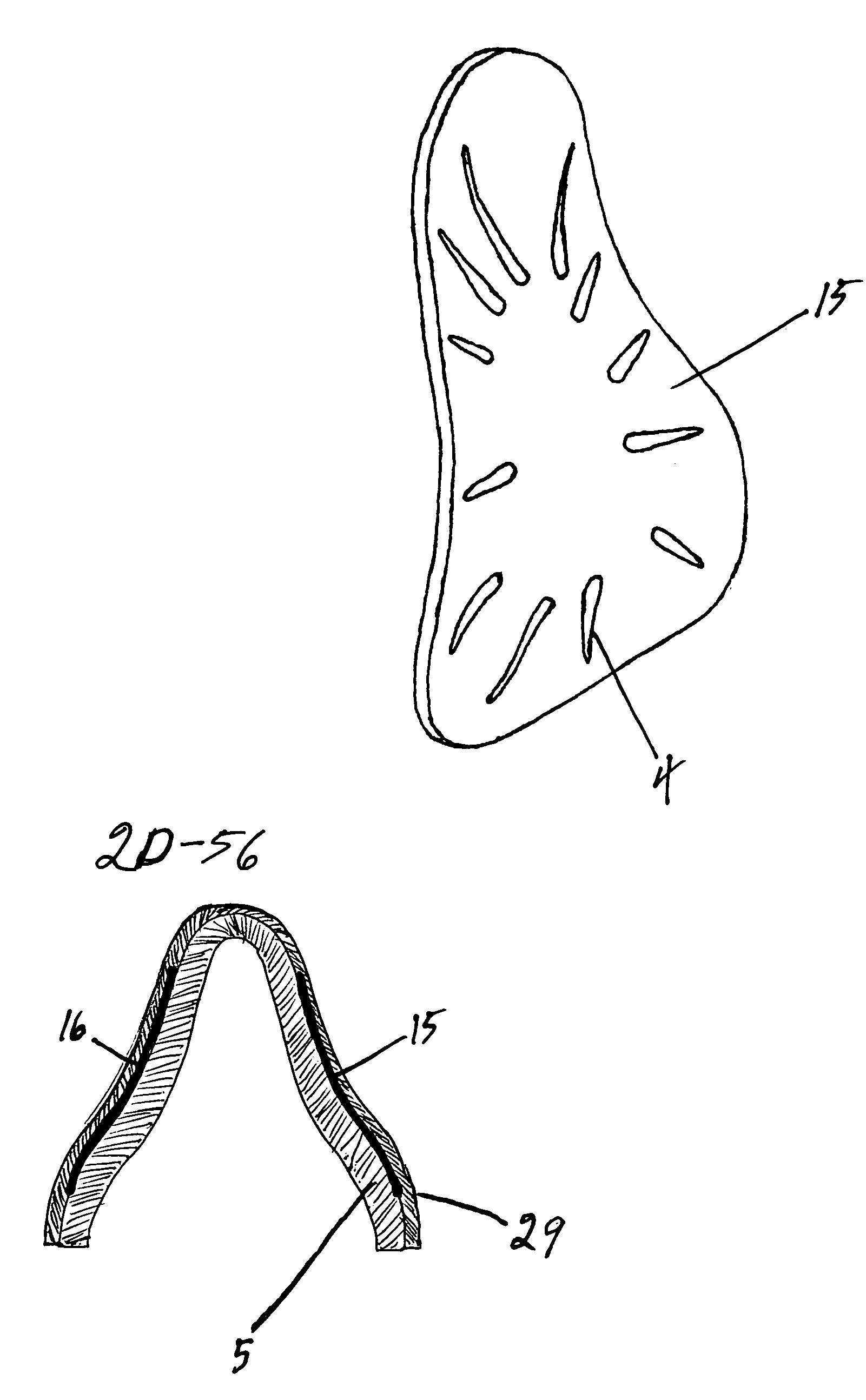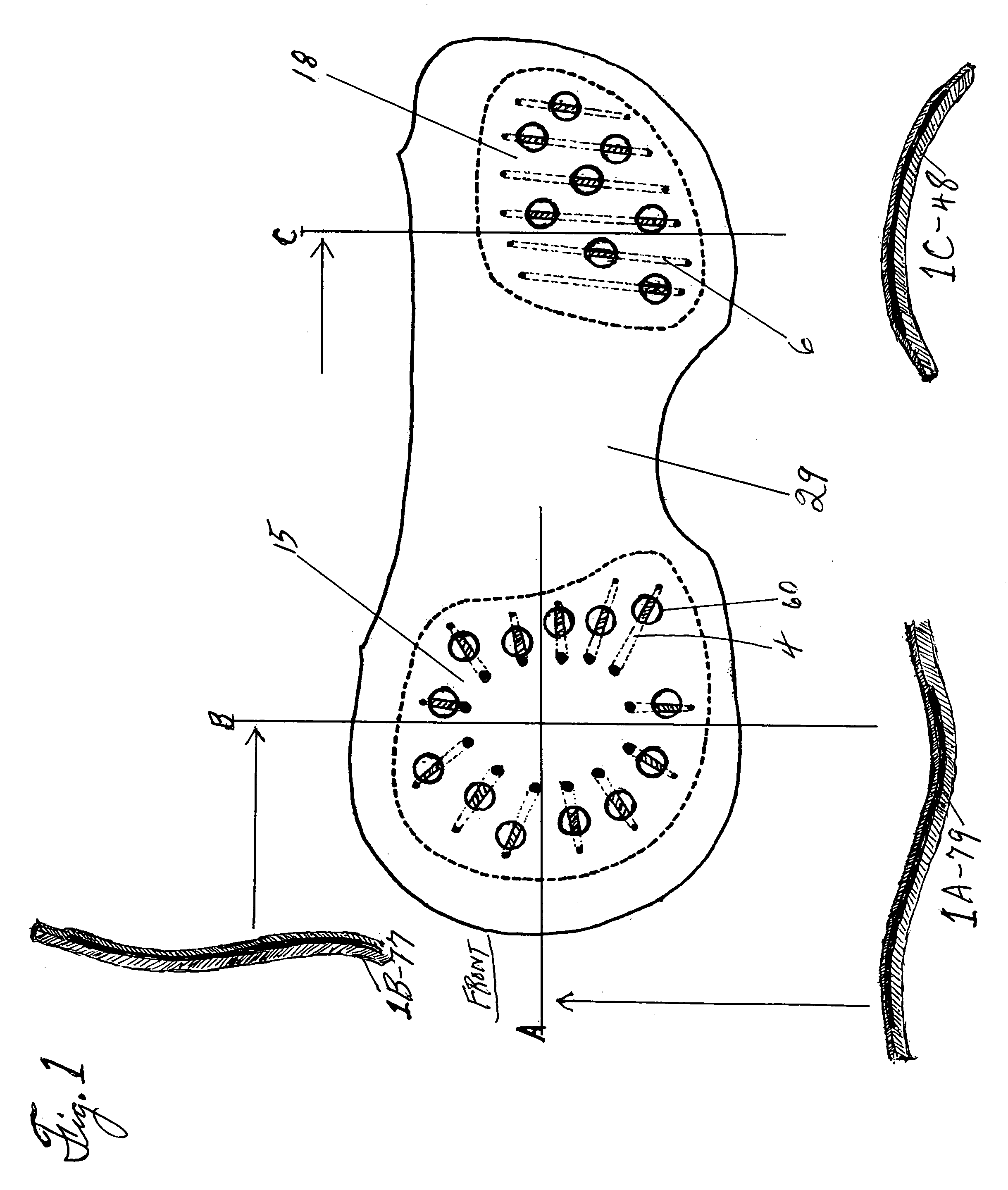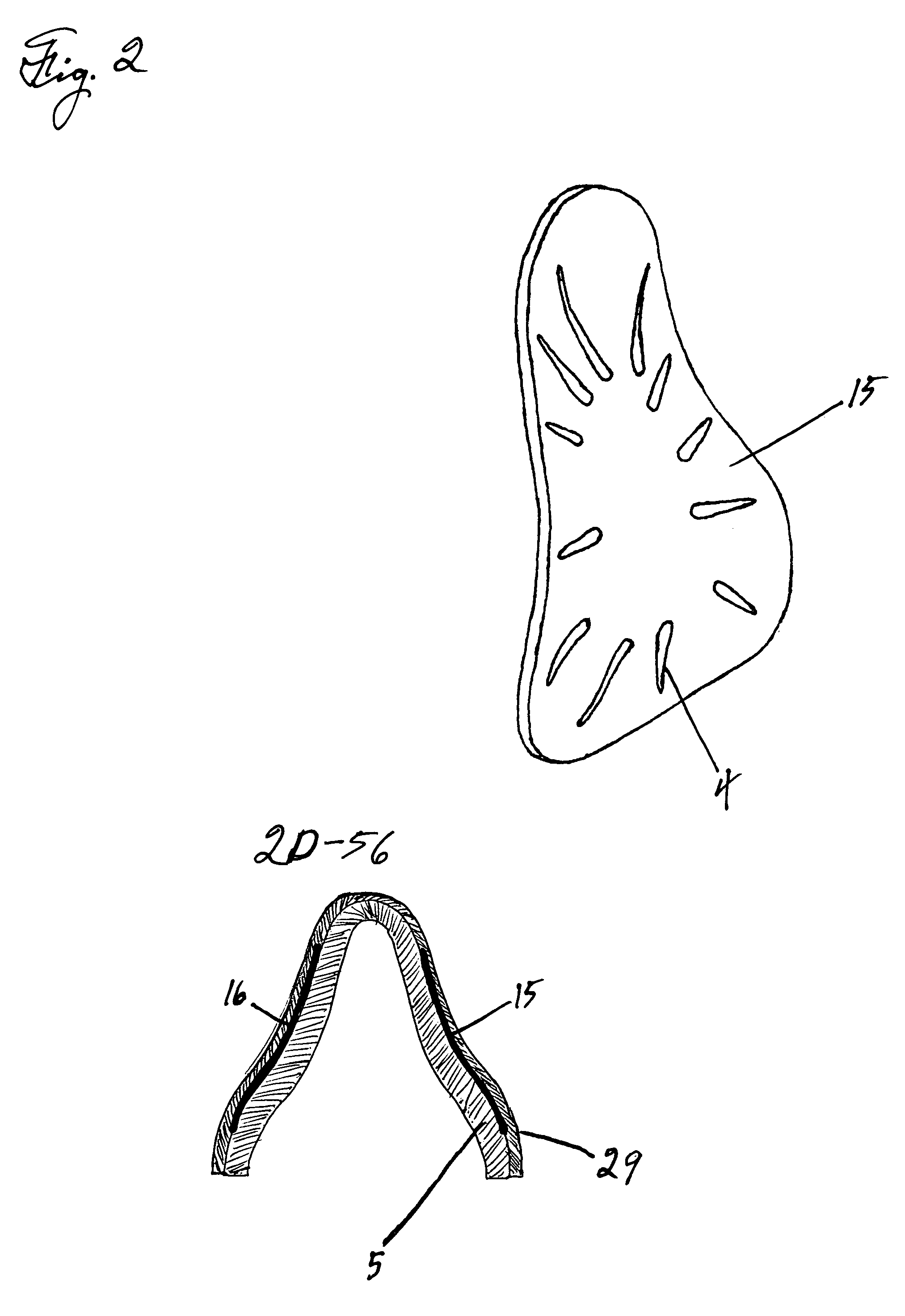Saddle correcting device having four molded and slotted protective shields
a technology of protective shields and correcting devices, which is applied in the direction of saddles, fastening devices, traction harnesses, etc., can solve the problems of extreme chaffing on the equine's back, less than desirable to both horses and riders, and no complete success, so as to avoid the muscular response, increase the pressure on the end, and avoid the effect of muscle respons
- Summary
- Abstract
- Description
- Claims
- Application Information
AI Technical Summary
Benefits of technology
Problems solved by technology
Method used
Image
Examples
Embodiment Construction
[0017]1. Turning now to the drawings, the saddle correcting device is illustrated in FIGS. 1–4. Broadly speaking the assembly consists of a pair of aprons with four slotted and molded protective shields inserted between layers of felt or other material suitable for use against the equine's skin. Two of the protective shields are in the front and two at the rear.
[0018]2. In more detail, the saddle correcting device preferably has 2 aprons, a right and a left. Each apron is simply a mirror image of the other. What is shown in FIG. 1 as shield 15 is duplicated as 16 on the right side of the horse, illustrated in 2D-56FIG. 2. This is the only illustration of both sides of the device in the drawings. Identifying numbers of identical components remain unchanged in all the drawings.
[0019]3. The Left Front Shield 15 is shown in a sectional view from the front, at line B, FIG. 1B-77. Shield 15 is a gentle convex shape against the horses withers on the upper ⅓ of it's contact surface, as illu...
PUM
 Login to View More
Login to View More Abstract
Description
Claims
Application Information
 Login to View More
Login to View More - R&D
- Intellectual Property
- Life Sciences
- Materials
- Tech Scout
- Unparalleled Data Quality
- Higher Quality Content
- 60% Fewer Hallucinations
Browse by: Latest US Patents, China's latest patents, Technical Efficacy Thesaurus, Application Domain, Technology Topic, Popular Technical Reports.
© 2025 PatSnap. All rights reserved.Legal|Privacy policy|Modern Slavery Act Transparency Statement|Sitemap|About US| Contact US: help@patsnap.com



